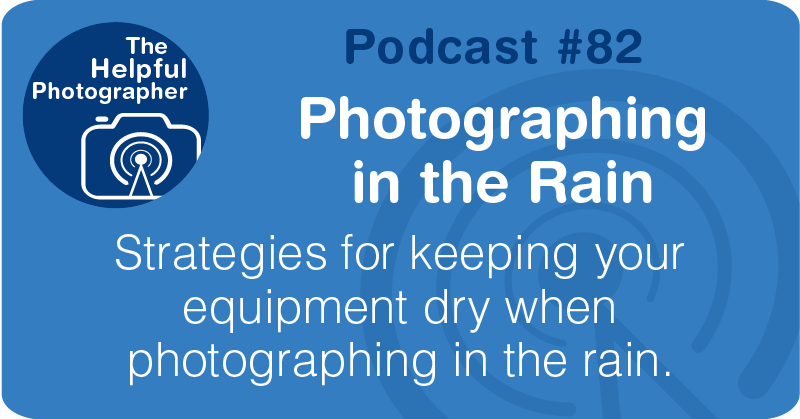Photo Tips Podcast: Photographing in the Rain #82

iTunes
Google
Audible
Tune In
Stitcher
RSS
Pandora
Transcript
Photographing in the Rain #82
Last week I found myself in Kyrgyzstan hiking in the mountains and shooting a waterfall in the rain. All I can say is I really hate shooting in the rain mostly because I hate being outside in the rain. Having to walk around wet is just not my idea of fun. Then add the stress of trying to keep my equipment dry. I just hate it with a passion. Now that I got that off my chest. The fact is I was on the other side of the planet without an option to go back to shoot another day, I was stuck. So what to do? First of all I always bring a poncho with me. Even though I still use a fair amount of waterproof clothing, I find that there’s really nothing better than a poncho when you are shooting in the rain. Ponchos are great because they cover everything. Not only will they cover you but your camera bag as well. It also provides a dry place to change your lens. When you need to change or lens or battery or whatever, you just pull the poncho up over your head so that you basically have a tent over your equipment. If you are shooting on a tripod you could even put your poncho over you and your camera leaving just your front leg and your lens exposed – although this is a bit of a trick.
Although most camera equipment, that I have had experience with, will take some water, you can’t just leave the camera out in the rain and think that it’s going to be ok. Bit a little bit of water is not going to be a problem. If I know I’m going to shoot in the rain, I do try to cover my equipment with a camera raincoat and if I don’t have it on me I will use whatever I have like a hat. I often carry a shower cap from hotels in my camera bag as an emergency camera rain coat. On my particular excursion in Kyrgyzstan I forgot my camera raincoat and my poncho and was stuck hiking in the rain. Luckily my guide had a hat and I put that over my lens whenever I wasn’t shooting and I put my waterproof beanie over my camera. Luckily this worked out pretty well. Another thing you can carry which of course I didn’t have is an umbrella. But if you are shooting upwards and wide, this can be less helpful, as your umbrella may get in the way of your shot. What I did have was an extra micro fiber cloth on me, so I would quickly clean off the front of my lens with one cloth and then again with the dryer one. I also kept the cloths in separate pockets; it was an attempt to keep the dryer one dryer. And I cleaned my lens in between every shot.
The biggest struggle for me when shooting is trying to keep my equipment dry. By equipment I mean my camera and lens. By equipment I mean my camera and my lens. I do understand that Fuji makes a weatherproof camera; although it is supposed to take a fair amount of water, you still can’t submerge it. It should also be noted that unless that body is coupled with a weatherproof lens you still need to be careful. As for tripods? I very regularly put my tripods in directly into rivers. Last week I was carrying the new Explorer tripod by Nisi. I was not only using this tripod in the rain, I also had the legs sitting in the river as well. I had to do this a couple of times and everything was just fine. I was pretty impressed with the Nisi tripod. I went from the heat of the desert all the way to freezing cold weather in under 10 days and it continued to perform for me.
Other than trying to keep my gear dry, I’m not sure what else I could have done other than not shoot in the rain. I must say that shooting in the city at night or during the magic hour, when it’s raining or after a rain can be really nice because the lights from cars, street lights and buildings bounce off the roads and sidewalks which make for great photos. But when it comes to landscapes like the waterfall it’s a lot more challenging for me because I find the light to be so dull. I haven’t had a chance to process my images, but I’m hoping for the best.
So whether you are shooting in heavy rain or light rain try your best to keep your equipment dry. The more it’s raining the harder it will be. At some point you will need to decide whether or not it’s worth risking your gear for that shot. Again I don’t know how much rain is too much rain, I just know that it ain’t great for your camera.
One last thing, when you’re done with your shoot bring your equipment back to your house or hotel, unload your entire bag and give it a chance to dry out.
